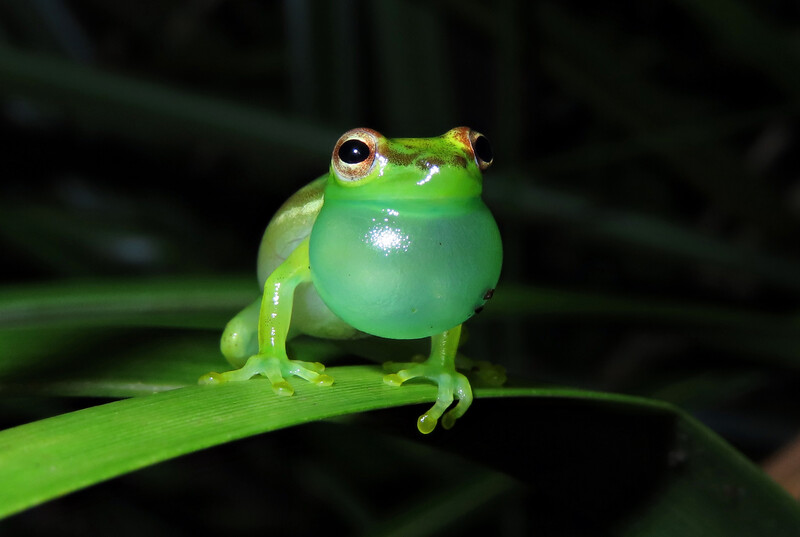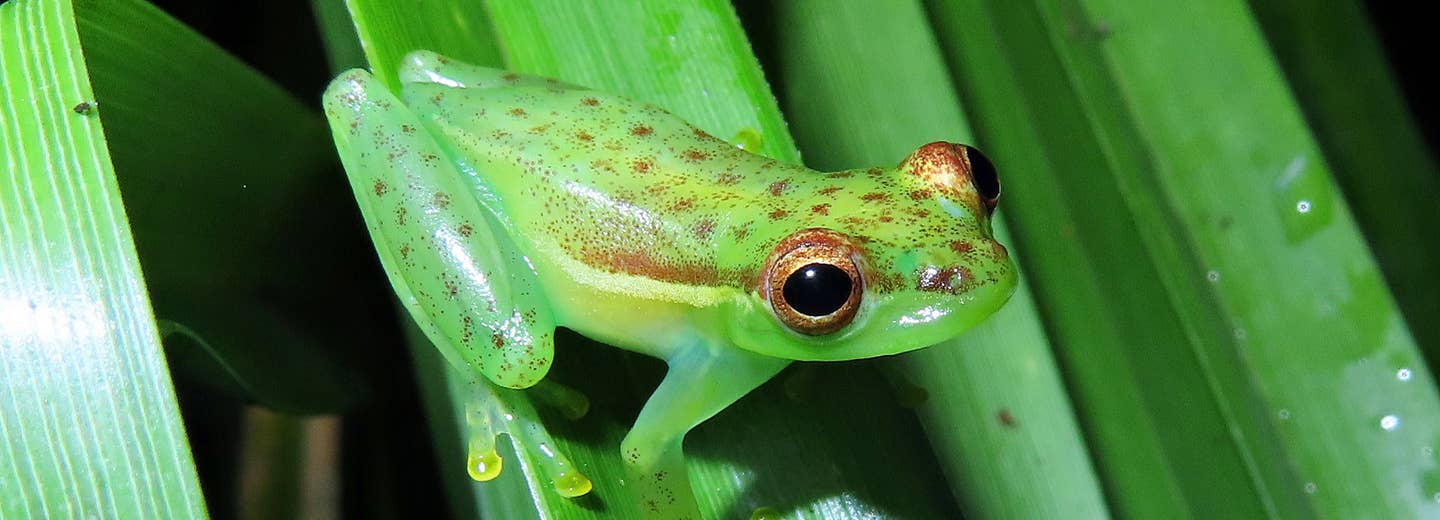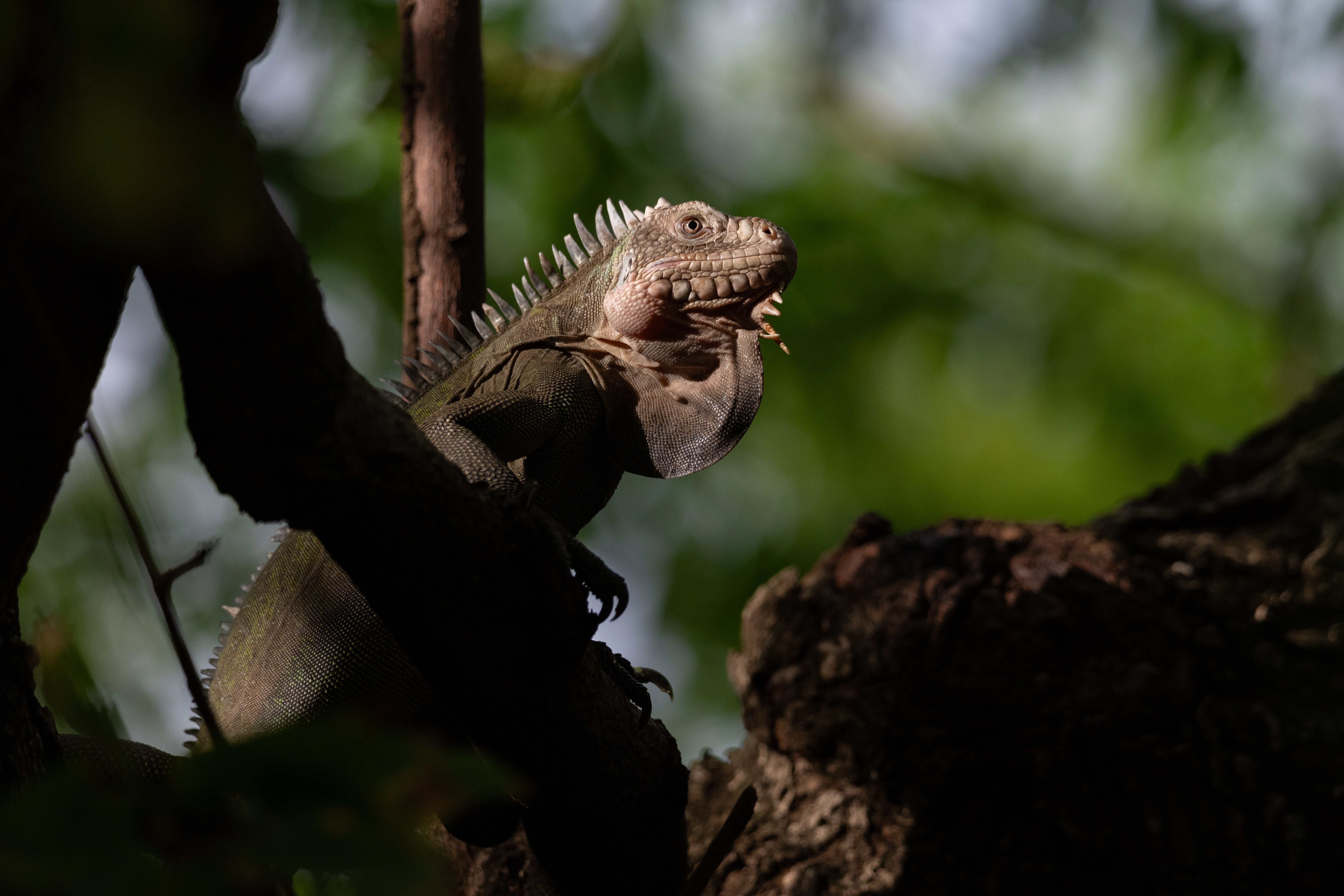A Costa Rican naturalist’s well-trained ears helped discover a new species of frog. The tapir valley tree frog (Tlalocohyla celeste) was described for the first time in a paper published Aug. 31, in the journal Zootaxa. The frog was discovered by Donald Valera Soto, the co-owner of Tapir Valley Nature Reserve, a cattle-ranch-turned-wildlife-reserve. The frog’s scientific name honors Río Celeste, a tourism icon for the cantons of Upala and Guatuso in Costa Rica, and its common name honors the reserve where it was discovered. The tapir valley tree frog is only the fifth species to be described within the genus Tlalocohyla. Scientists think the frog may be critically endangered since it lives in a 20-acre wetland within Tapir Valley Nature Reserve.
“We as country boys, we know sounds,” said Soto, who discovered the frog, and is the paper’s lead author and the co-owner of Tapir Valley Nature Reserve. “I grew up in the countryside; I grew up in the forests walking around learning to identify species of trees, birds and frogs. I listened to this little frog and it was almost impossible to find it, it was so well camouflaged. I was really happy when I found it because I had been trying to find the frog that was making that unusual call for six months after I first heard it.”
Soto first heard the tapir valley tree frog’s shrill call among the calls of more than 10 other frog species, while he was working around a wetland pond after the first heavy rains of the year in late March 2018. He had been planning to expand the wetland area to make it more hospitable to migratory species of birds during their journeys between North America and Central and South America. The unfamiliar frog call stopped him in his tracks as he was walking through the wetland and prompted him to investigate which frog was making it.
After months of nighttime walks and surveys when the frog is most active, Soto and a small team that included his two young daughters, Kira and Ellie, herpetologist Juan Abarca, and biologist Valeria Aspinall, finally spotted one of the frogs. It measured only 2 centimeters and was camouflaged in the tall grasses around the pond, making it difficult to spot even from a few feet away.
The frog had slightly different markings than other common species. The biggest clue that it was a new species was a yellow line, which runs about halfway down the frog’s flanks then abruptly stops. The Canal Zone Tree Frog (Boana rufitela) also has a yellow line, but the line continues the entire length of the frog’s body. The team looked through books and scientific literature on Costa Rican amphibians, but the characteristics didn’t match any other known species of frog.
“First we needed to determine how morphologically, or physically, similar or different this species is to other more common species,” said Abarca. “The adult morphology is very important, but one of the things that is very hard is to find the tadpoles. The tadpoles can help identify the genus.”
Eventually, the team was able to find two adult tapir valley tree frogs in amplexus, the mating embrace for frogs.
“That's when we also finally were able to identify or pinpoint which eggs or which egg masses belong to the species,” said Aspinall. “Before that, we couldn't just assume it, because there's 15 other species laying eggs within the same environment, so we couldn’t actually tell them apart until after we found the eggs attached to the leaf.”
The team monitored the eggs the female laid on the underside of a leaf until they hatched and the tadpoles dropped into a container with water, allowing them to describe the morphology of the tadpoles. In addition to the physical description of both adults and tadpoles, the team analyzed the frog’s DNA. It didn't match any other known species of amphibian and had to be a new species.
“I love this frog, because it tells a larger story,” said Esteban Brenes Mora, senior Re:wild’s Mesoamerica associate. “When Donald started Tapir Valley Nature Reserve, it was to protect tapirs and help them move between forests. He didn’t know that there were completely new species to science living on the reserve, but if he hadn’t protected this place for tapirs we might not have ever discovered this little frog.”
Tapir Valley Nature Reserve was originally a cattle ranch that Soto and Melvin Rodriguez have been rewilding for 18 years, returning it to lush forest habitat. After moving cattle and other domesticated livestock out of the reserve, they let native plant species and trees grow unchecked. The forest has since attracted endangered peccaries, jaguars and Baird’s tapirs. Baird’s tapirs are known as “gardeners of the forest” because they disperse the seeds of plants widely and are the only animals that are capable of dispersing the seeds of one tree species that sequesters large amounts of carbon.# # #
Photo: The tapir valley tree frog (Tlalocohyla celeste), a newly described species that was discovered in a Costa Rican nature reserve. It’s only known home is a 20-acre wetland area on the reserve. (Photo by Juan G. Abarca)













